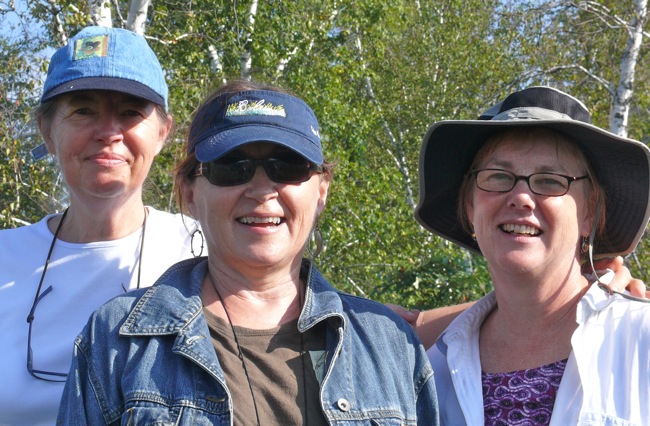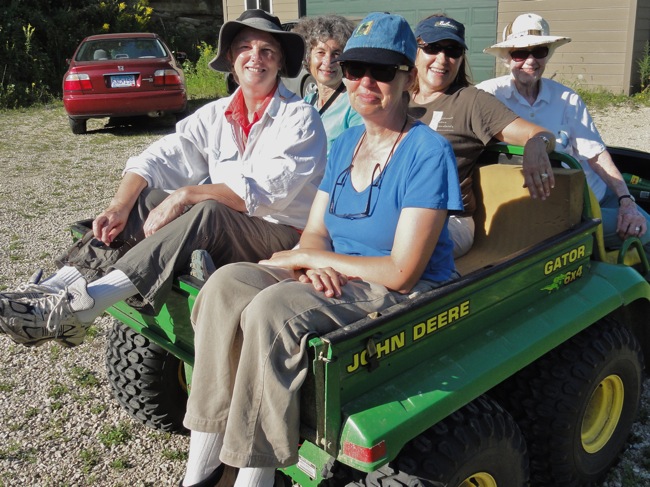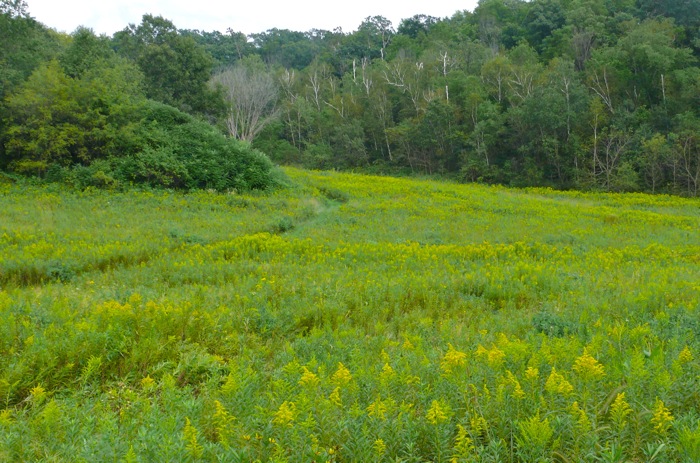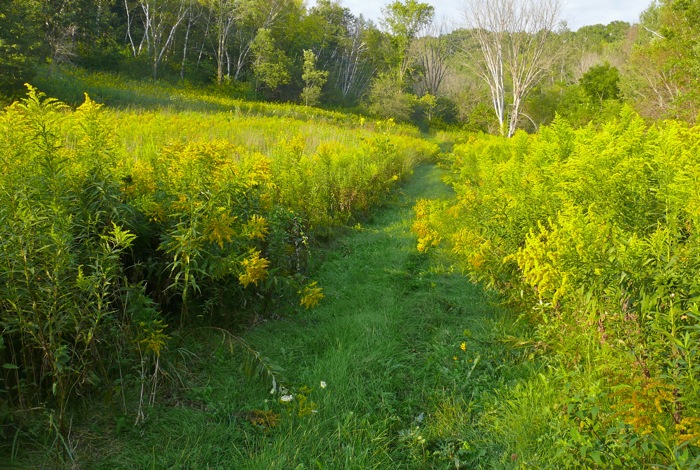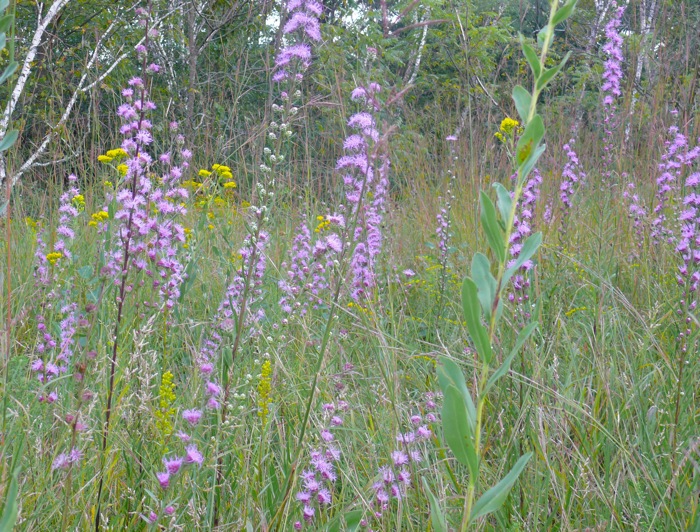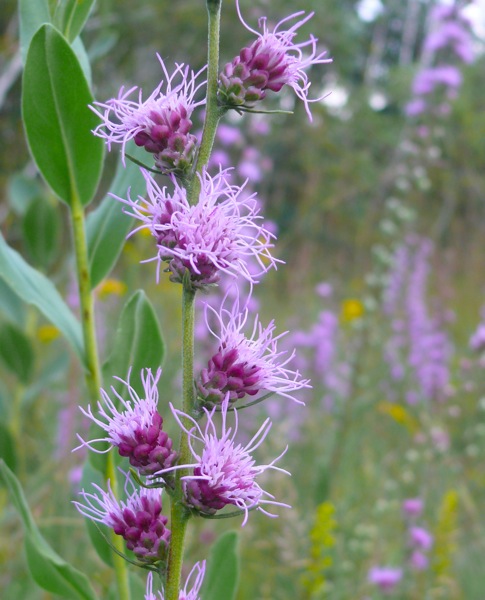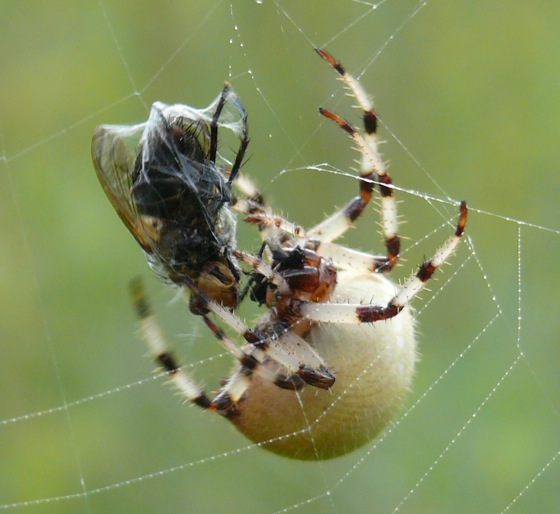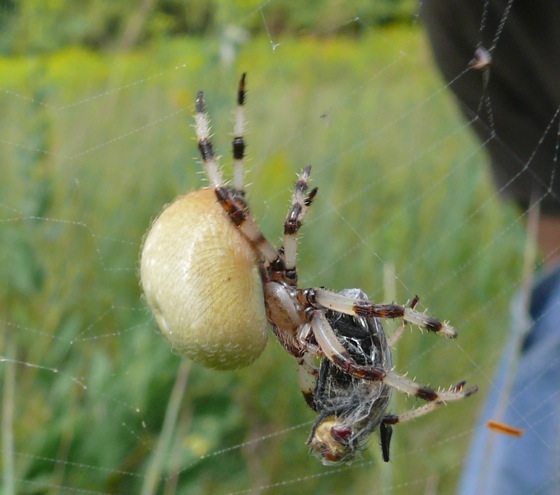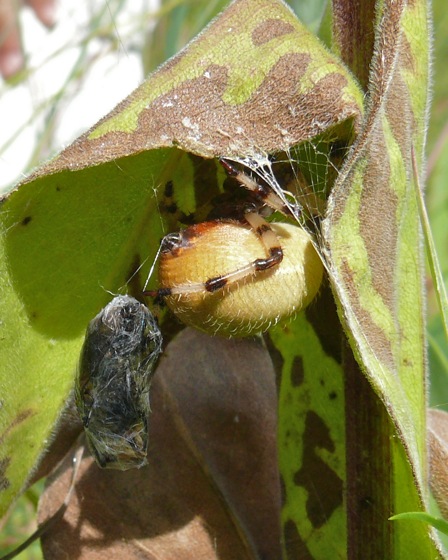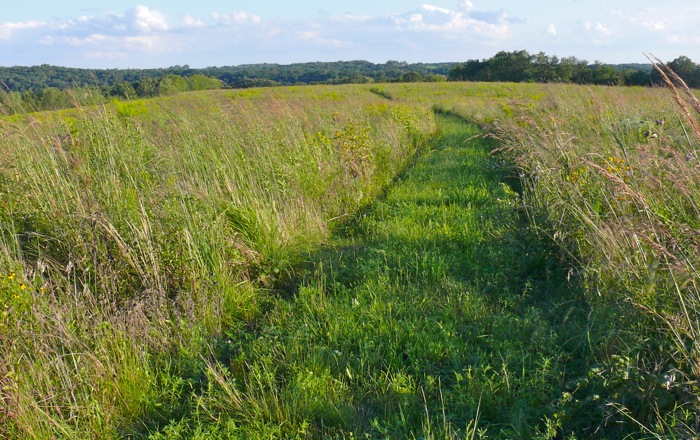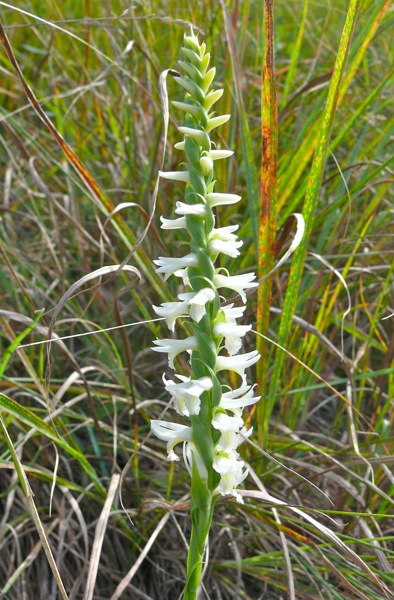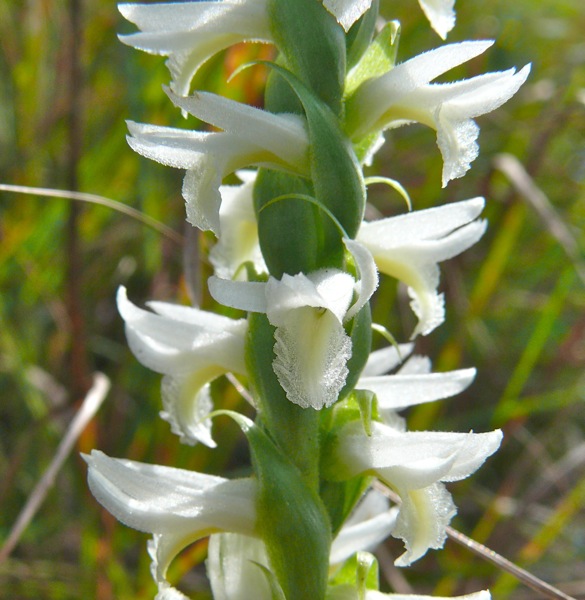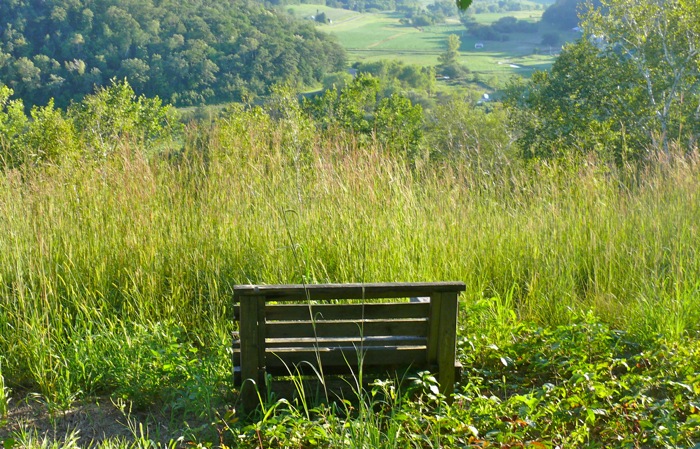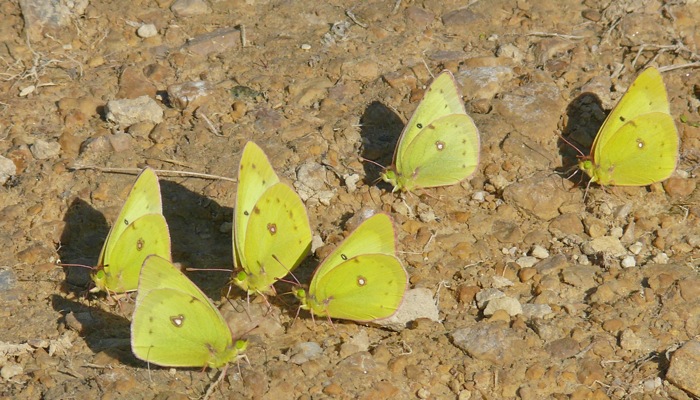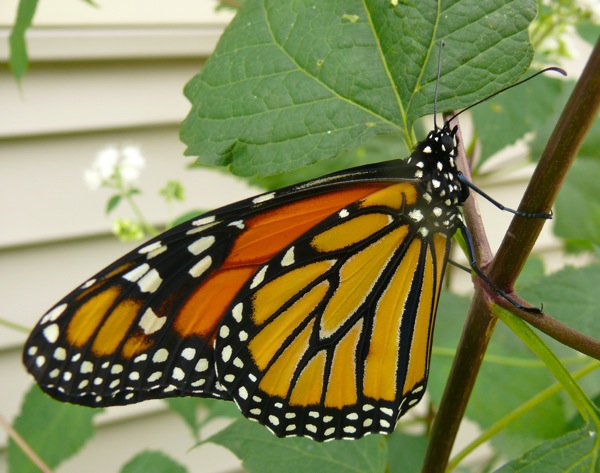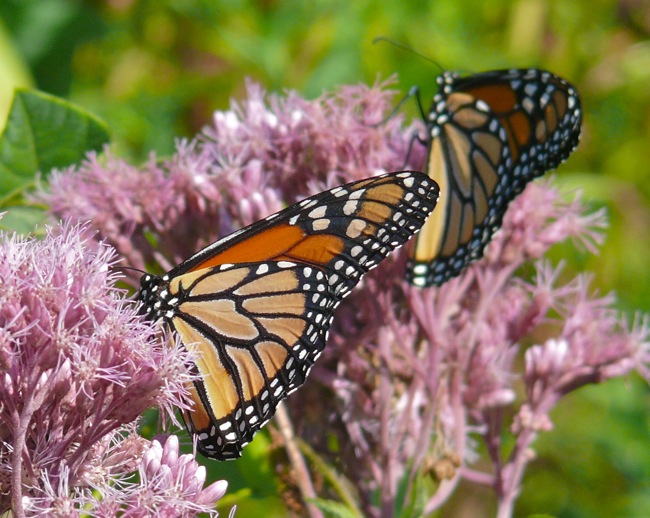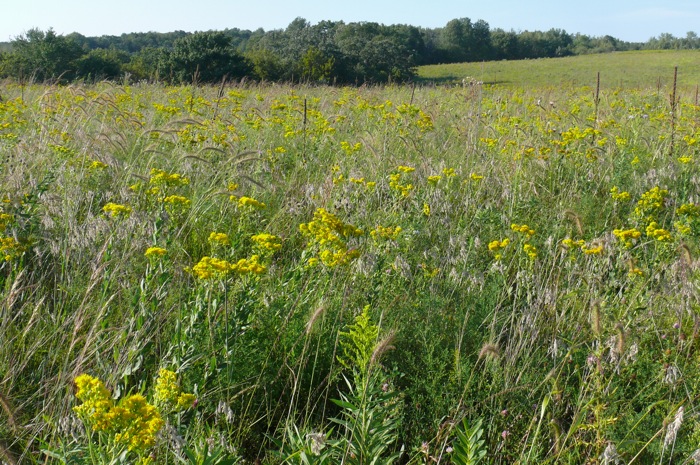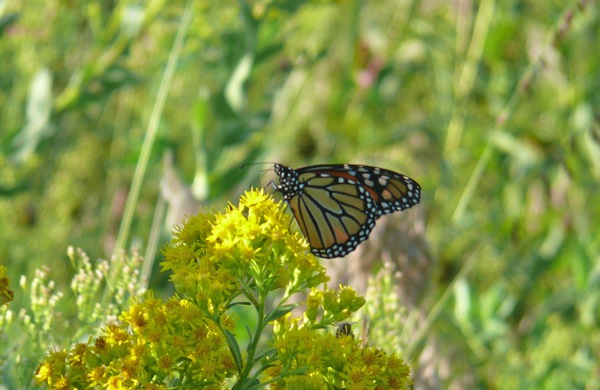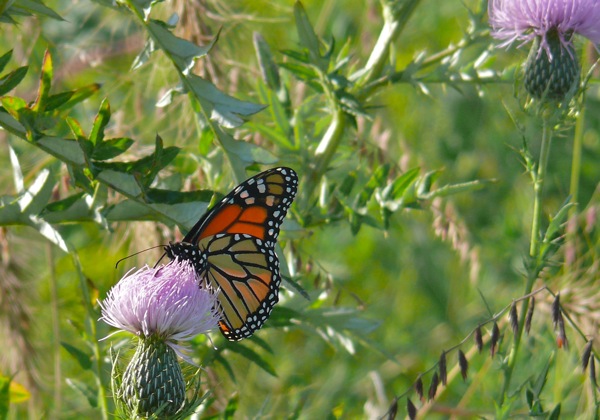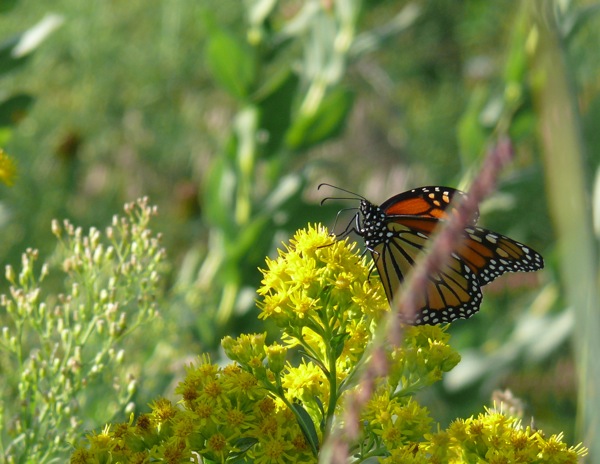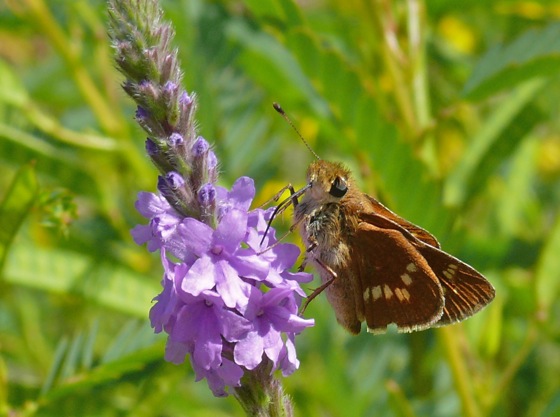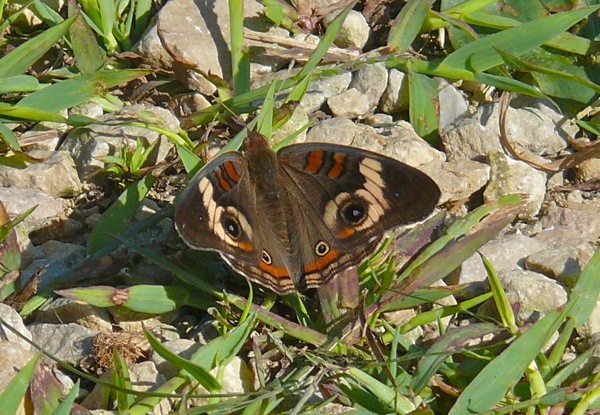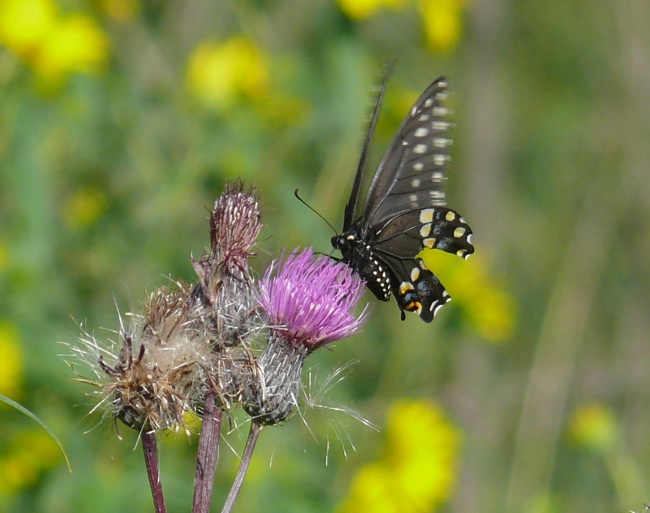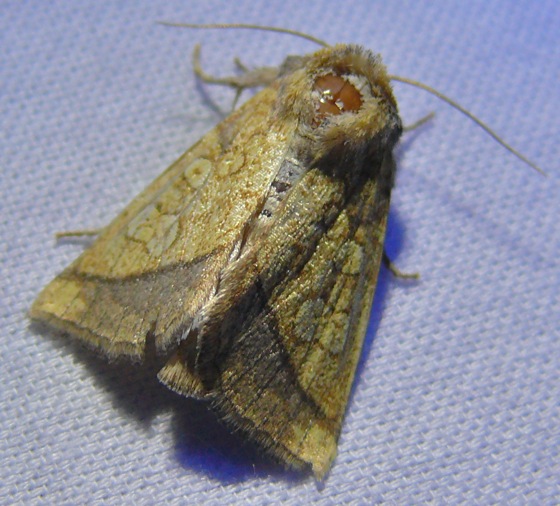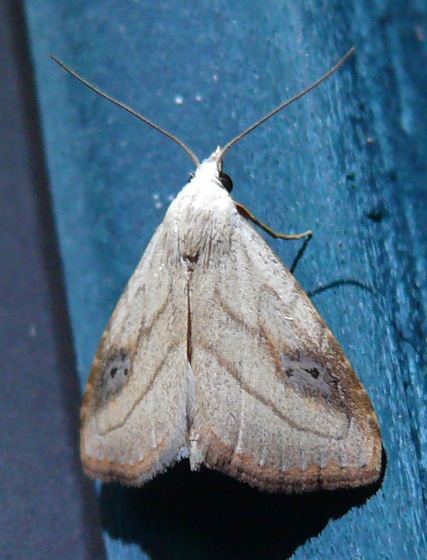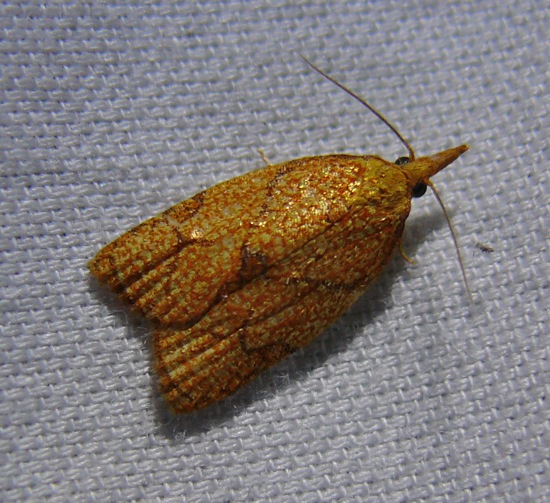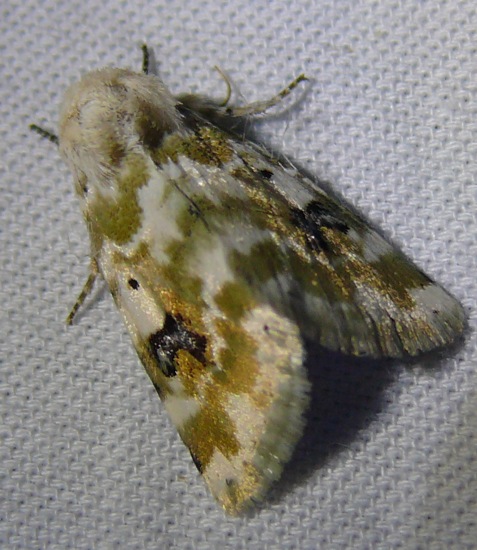Arlene brought two cousins and our friend Elizabeth down to visit the prairies this week. We did tours of all the planted prairies and several of the remnants. Everything is still looking very lush and green because of all the rain.
Kathy, Judy & Arlene
All of us in the gator – Arlene, Marcie, Kathy, Judy, Elizabeth
Mike made a new path through 3 Finger Valley this year, so I see different views.
The old path through 3 Finger Valley – lots of Canada Goldenrod but it’s still beautiful.
Rough Blazing Star is in full bloom in the Knife Edge Prairie.
We found a wonderful spider – very large – its body was an inch long. It had just caught a fly, so we watched it wrap it up and stash it away to eat later. I think it’s a Shamrock Orbweaver.
Here’s the spider, hidden in a nest of leaves near its web.
Western Prairie is looking especially good this year. It’s our biggest planted prairie – about 60 acres. There were lots of grassland sparrows nesting there this summer, and this fall the prairie grasses are putting on a good show. The asters are just starting to bloom.
We found Great Plains Ladies Tresses blooming on Big View Prairie. It’s an orchid that grows on dry prairies, and blooms in the late summer and fall.
Close up, the flowers really do look like orchids.
I tried an experiment on Big View Prairie this year. The area right in front of the bench was all Smooth Brome (Bromus intermis) – a non native pasture grass that’s left over from when the land was grazed. This spring, when the Brome grass was a few inches tall, but before most of the prairie plants had come up, I sprayed with glyphosate. It was very successful! All the Brome is gone, and now the area is all Big Bluestem (Andropogon gerardii – a native prairie grass). The only problem is that the Bluestem is so tall that there’s no view from the bench. There are other prairie plants coming up too – Violets and Ground-cherry (Physalis sp.) – so I’m hoping the area will become a little more diverse – and maybe a little shorter – next year.
I’m still seeing plenty of butterflies. There are still lots of Clouded Sulphurs on the driveway and fluttering over all the fields.
Mike took a video of some Clouded Sulphurs clustering along a roadside near here.
Monarchs are migrating now – they’re flying higher and definitely in a southerly direction. This is one of the ones I raised this year – just after I released it.
Monarchs seem to especially like nectaring on flowers in the composite family while they’re migrating. These two were on Joe Pye Weed.
Western Prairie was full of Monarchs today. I think the south wind was slowing down their southward movement, and they were taking advantage of all the flowers to get some nectar. The newest part of the prairie has lots of blooming Stiff Goldenrod, and there were Monarchs everywhere – we saw more than 100 as we walked the length of Western Prairie. The wind was blowing, and every time a gust swept across the field, Monarchs would sail up from the flowers.
Western Prairie with Stiff Goldenrod
Monarch on Stiff Goldenrod
Monarch on Field Thistle (Cirsium discolor – a native, non-invasive thistle).
And a few more butterflies…
Leonard’s Skipper – also called Blazing Star Skipper – on Hoary Vervain
A Common Buckeye – these butterflies appear at the end of the summer. They’re migrants from farther south – they don’t overwinter here.
A very tattered Eastern Black Swallowtail nectaring on Field Thistle. It looks like a bird took a bite out of his wing.
And, of course, I’ve been seeing moths at my lights at night. Here are a few of the best ones.
Rigid Sunflower Borer – its caterpillars eat sunflowers and related plants
Spotted Grass Moth
Reticulated Sparganothis – this moth is less than 1/2 inch long
Goldenrod Flower Moth – its caterpillars eat the flowers of Goldenrod and related plants
Another Flower Moth – an Arcigera Flower Moth. The caterpillars of this one eat aster flowers.

